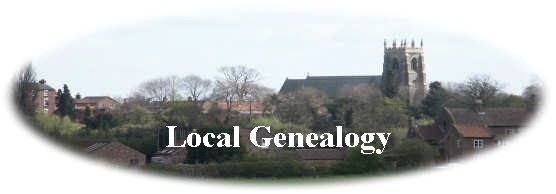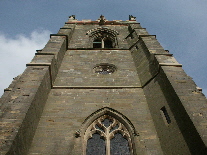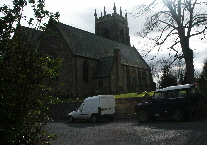|
|
 |
||
|
Genealogy Many parish records, St Columba's Church Topcliffe included, are not kept locally any longer because of security concerns. These records have now been transferred to local libraries or county record departments. However in an effort to provide an online service to people seeking information St Columba's is involved in an ongoing effort to convert all the church records to an electronic format, and make them available on the internet for a small fee of £1.00 per item, which goes to St Columba's Church funds! This massive project is being undertaken by volunteers and some of the first items available are the 1998 graveyard surveys. These professional surveys including mapping of all the monuments in both the main St Columba's Graveyard and the Winn Lane satellite site are available for download in Adobe Acrobat PDF image format. Also available from 300103 is the 1838 Topcliffe Parish Tithe data.
St Columba's Church Topcliffe Graveyard Map. (298kb Tiff Image) St Columba's Church Winn Lane Graveyard Map. (151kb Tiff Image) Note the numbers on the maps refer to entries in the graveyard survey text! You need to zoom into the images to view the individual grave numbers! Right-Click the links and save them to your computer to view them better. Tithing The origin of the word tithe came from the Old English (O.E.) Teothian meaning a “tenth”. Tithe is mentioned in the Old Testament, and was later taken up by the Christian Church as a means to support the clergy, assist the poor and to maintain the church. The people were required to give a “tenth” of their income. This could be in the form of either money, crops or even livestock. In the Medieval Period, tithes would help to build the cathedrals on the continent as well as England. In the 6th century tithes were imposed by ecclesiastical law, and by the 8th century it would be enforced by non ecclesiastical (secular) law. It was made obligatory in England in the 10th century by Edmund I (939-46) using ecclesiastical penalties, which insisted on regular payment or offerings in kind. Later by temporal (civil) penalties by Edgar(959-75). It was Edgar which introduced “that every freeman must be enrolled in a group of ten” which came under the name “tithing”. In each tithing there was a tithing man whose duty it was to keep the peace. Landownership was outlawed by Pope Gregory VII,(1073-85) this was an effort to control abuse, which had now become apparent. Gradually the tithes were repealed in 1789 in France, 1887 in Italy, and Ireland in 1871 and also that year The Church of Scotland. In 1836 in England the tithe was commuted for a rent charge, which depended on the price of grain. In 1888 the tithe became an obligation of the landlord and not the tenant. By 1936 the tithe was abolished. However in some countries new methods of taxation were introduced to those countries that supported the church from Government funds. Click here to download the Topcliffe Tithe map (Part A). (1.6mb) Click here to download the Topcliffe Tithe map (Part B). (877kb) Right-Click the links and save them to your computer to view them better. |
||


